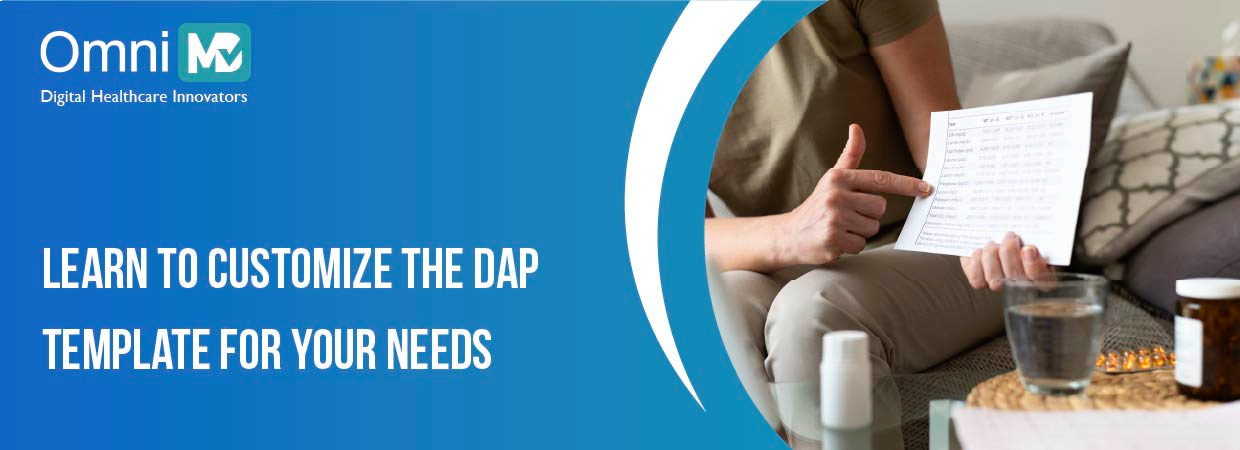How to Write Therapy Notes Quickly
You are in a session with a patient who is visibly overwhelmed, battling the storm of confusion and doubt. You lean in, offering your attention, absorbing every detail of their words and emotions. But as the session flows, you find yourself hurriedly jotting down fragmented notes, trying to keep pace with the conversation. And later in the evening, you end up staring at your scribbled notes, struggling to recall the depth of the session. As psychiatrists, this is something we all have encountered at one time or another.
Therapy notes that serve as the foundation for your patient’s treatment plan and a steppingstone for your reference are the most arduous things to do in a way that provides all the relevant information in a clear, concise, and well-organized format. In a 2023 survey conducted by the National Council for Mental Wellbeing, one-third of the workforce reported spending most of their time on administrative tasks.
Hence, writing therapy notes that are not only effective but also save time and effort is of utmost importance. This article will guide you in doing so. Besides, the write-up explores the most used template, DAP, and how you can align it with your requirements.
But before holding on to the discussion, let’s first comprehend how therapy notes differ from progress notes and what HIPAA regulations say about them.
Notes That Are Equally Important but Exceedingly Different
Note-taking plays a vital role in providing exceptional medical care. All healthcare professionals, including those in mental health, rely on progress and therapy notes to treat patients with precision. Although the terms ‘progress notes’ and ‘therapy notes’ are used interchangeably, they vastly differ technically. Here’s how.
Therapy Notes/ Psychotherapy Notes
Therapy notes, often referred to as psychotherapy notes, are personal records that providers create during sessions. These notes capture emotions, perceptions, and reflections on conversations, helping clinicians recall key details of each appointment. They also highlight topics or issues that providers might want to explore in future sessions.
Notably, therapy notes do not include information such as medication details, diagnostic summaries, or treatment plans. Their sole purpose is to support clinicians in delivering excellent care.
Besides, due to their highly sensitive nature, they are kept strictly confidential and are not to be shared with any third parties, including insurance companies or other providers. Even if the patient themselves requests these details, clinicians are under no obligation to disclose them. This is because therapy notes often contain interpretations that could be misunderstood or misinterpreted by the patient.
As per the HIPAA regulations, therapy notes should be kept separately from clinical records and must be stored in a password-protected ecosystem accessible only to the provider.
Progress Notes
Progress notes, in contrast, are meant for broader purposes. They adhere to standardized guidelines and document specific details such as:
- Start and end times of sessions
- Patient demographics
- Symptoms and diagnoses
- Treatment methods and approaches
- Medication details
- Observations on appearance, mood, and safety risks
These notes aim to keep other healthcare professionals informed about the treatment process and provide necessary documentation for insurance claims. Without progress notes, healthcare practitioners would have to start from scratch every time they meet the patient, increasing the rate of physician burnout and medical mistakes.
While progress notes can be shared among healthcare professionals, they are still protected under the HIPAA Privacy Rule. Disclosure beyond explicitly allowed purposes is strictly prohibited.
Now coming back to the focal point of our article, which is therapy notes, writing while also being attentive to clients is no less than tackling the incline. Following are the tips that we have compiled from our experts to let you write in a way that works for you in just 10 minutes.
Writing Effective Therapy Notes In 10 Minutes
Be concise, but clear.
Your therapy notes should be concise but must include all the relevant information. They need to be clear enough to make sense when you read them as a reference to recall what happened in previous sessions. Do not use jargon, acronyms, or uncommon terminologies that may confuse you later. Instead, use simple, straightforward, and grammatically correct sentences.
“David expressed concerns about feeling neglected during his adolescence due to his mother frequently traveling for work. He mentioned that she was away for extended periods, especially between the ages of 10 and 15. During these times, David often felt lonely and relied on his older sister for support. He stated that this dynamic made him hesitant to depend on others and contributed to his fear of being let down.”
Here’s how the edited and more concise version would look:
“David expressed concerns about feeling neglected during adolescence due to his mother’s frequent work-related absences, particularly between age 10 and 15. He noted relying on his older sister for support and believe these experiences contributed to his fear of being let down by others.”
Maintain a balance
Assess your client’s situation from every angle, and skip using overly positive or overly negative comments in your notes, as this can lead to a biased opinion. Decide beforehand what you are expecting from the session or what information you are required to prepare a treatment plan for your patients. In other words, focus only on the information that you will actually use, and ensure your observations and insights are clearly reflected in your piece of writing.
“Sarah is an extremely anxious and overwhelmed young woman who appears unable to manage her stress at all. She mentioned feeling completely hopeless about her current situation, and it seems unlikely that she will make any significant progress without considerable intervention. Her strained relationships with family and friends only add to her negativity and lack of motivation.”
Here’s how the edited and more balanced version will look:
“Sarah expressed feelings of anxiety and overwhelm, noting challenges in managing stress effectively. She described her current situation as difficult and acknowledged struggles in maintaining relationships with family and friends. These factors will need to be addressed as part of her treatment plan to support progress.”
Review your notes
Learning from past mistakes is the best way to improve your note-taking skills. If you’re spending more than 10 minutes on notes, then our experts recommend reviewing three months of notes for one of your clients. Identify non-essential details that could have been eliminated to save time, as well as any important points that were overlooked. You can also benefit from discussing your note-taking approach with a colleague cum friend to gain fresh insights and suggestions. Use their feedback to develop a strategy that enables you to complete your notes efficiently, ideally within 10 minutes.
Consider utilizing templates
Since therapy notes are not compulsory to be included in clinical records, they do not have to be in a standardized format, unlike progress notes. Yet many physicians and therapists use formats like SOAP, BIRP, and DAP, which are primarily designed for progress notes, to provide a structured framework to their notes, which might otherwise become subjective and disorganized.
Below we have explained the most common template, the DAP template, typically used by mental health professionals for getting a holistic view of the patient and their progress.
DAP Template for Therapy Notes
‘D’ stands for ‘Data’
While capturing data, include both subjective and objective information about the session, such as:
- Describe the client’s appearance, mood, and behavior, were they calm, anxious, or disheveled during the session?
- Jot down key statements made by the patient. Like: “I feel overwhelmed at work”. Don’t ignore the behavior or emotions displayed while the client is sharing their experience (e.g., tearfulness, fidgeting).
- Make note of primary topics or concerns discussed, was it a family conflict, work stress, or any childhood trauma?
‘A’ is for ‘Assessment’
Reserve this part of your note to interpret the patient’s medication status and the session’s overall input. Mark observations:
- If any progress is made toward treatment goals from the last session. Note if the client is showing any sign of better emotional regulations.
- Identify patterns in behavior or thought process, is the client/patient demonstrating avoidance tendencies or self-critical thoughts?
- Deduce inference from the client’s statements to reach underlying issue or contributing factors like: Is work-related stress exacerbating the client’s anxiety symptoms?
‘P’ equals to ‘Plan’
Here, plan the moving-forward treatment. Include:
- A brief description of therapeutic techniques employed during the session. Whether it was a cognitive restructuring or mindfulness exercise?
- Any new or ongoing goals set collaboratively with the client like practice grounding techniques 3x per week.
- An outline of the tasks assigned to the client to complete before the next session.
- Any topic that you think is necessary to address in the next session (e.g., address underlying self-esteem issues in future sessions).
So now where does AI come into play in all of this? Has it made its mark on therapy notes, just as it has in other areas?
How OmniMD Leverages AI for Faster Notes?
Good notes empower you to sidestep interventions that didn’t work last time and help you plan your treatment more successfully. But on the flip side, it consumes a lot of time. Also, frequent documentation distracts you from building personal and meaningful relations with your clients. As per a study published by the National Council for Mental Wellbeing, 93% of behavioral health workers have experienced burnout, with 62% reporting moderate to severe levels.
OmniMD AI Charting furnishes an intelligent and cost-effective solution to this obstacle by securely assisting you with the documentation process and transcribing sessions with suggestions. All you need to do is to click on the ‘Record Now’ button.
That being said, our auto-generated note technique, built on the ambient AI philosophy, is acknowledged for reducing documentation time by up to 70%. Capable of integrating seamlessly with your EHR systems, the platform is purpose-built for behavioral health professionals and engineered to accurately reflect your organization’s tone, terminology, and documentation style.

AI Charting: Therapy Notes Done in a Flash!
Spend less time charting and more time caring with AI-powered tools that simplify your therapy notes in minutes.

 Written by Neha Singh
Written by Neha Singh
 Reviewed by Shivani Joshi
Reviewed by Shivani Joshi